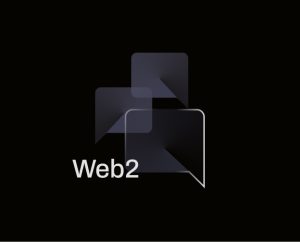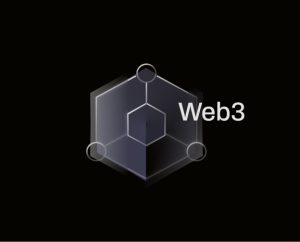Web3 – the Evolution of the Internet? Exciting! But what exactly is Web3?
The latest evolution
If you’ve been hearing a lot about Web3 lately but remain uncertain about its nature, you’re not alone. Many are grappling with a clear definition. In simple terms, Web3, the latest evolution of the internet, operates as a decentralized online network constructed through blockchain technology.
With Web3, centralized authorities or governing bodies no longer oversee platforms or apps. In other words, corporations no longer amass and exploit user data in exchange for access to Web3 services or apps. Users can engage on Web3 platforms without sacrificing their data for admission. Additionally, these services boast transparency and trust, as all data and updates are recorded on the blockchain.
However, this overview barely scratches the surface of comprehending Web3. To truly grasp this new internet phase, it’s essential to explore its predecessors.
Before Web3, there was Web2… and even Web1
During the 1990s, Web1, the initial version of the World Wide Web, graced our screens. Compared to today’s familiarity, it was a rudimentary form of the internet, characterized by slow-loading landing pages (remember dial-up tones?).
Moreover, Web1 offered a less interactive experience, limited to text and static images for users browsing the internet.



Subsequently, Web2 emerged, the internet as we know it today. In this version, users trade their data with major corporations for access to their services. It functions as a centralized web, where a considerable portion of online activity transpires on closed platforms regulated by dominant corporations like Snapchat, Meta, and Alphabet Inc., under government scrutiny.
Despite the popularity of sites such as TikTok, Web2 offers several advantages. Concerns over data collecting by these tech giants have fueled a movement aimed at reclaiming control over the online experience.
How Web3 differs and its significance?
Web3 ushers in a revolutionary shift in internet participation. Marked by both surface-level distinctions and nuanced variations from prior internet versions, Web3’s core objective is to establish a new decentralized internet. This marks a pivotal juncture where different web forms diverge, potentially reshaping the internet’s structure.
Expanding on decentralization
Vitalik Buterin’s enlightening article identifies three “axes” of decentralization within Web3 technologies and platforms:
1. Architectural decentralization – the count of physical computers operating the system. Decentralization employs an extensive network of computers rather than a central server.
2. Political decentralization – the number of individuals governing the computers and platforms. Web3 disperses control among users, contrasting with a single governing entity.
3. Logical decentralization – “Does the interface and data structures that the system presents look more like a single monolithic object, or an amorphous swarm?”
These components cultivate an egalitarian online experience driven by peer-to-peer networks. This innovative structure aims to redistribute control over data, wresting it from Web2’s corporations and governing entities.
Web3’s implications
Beyond eliminating gatekeepers and big businesses, decentralization and Web3 empower users to shape protocols and direct platform and app development. While this grants significant advantages, it may also entail drawbacks, which we’ll explore later.
Peer-to-peer interactions in a decentralized network facilitate transactions without intermediaries. The absence of middlemen, coupled with user data and content ownership, creates an environment where users can monetize their data and content.
In many ways, the rise of Web3 and decentralization has paved the way for digital ownership, epitomized by crypto and NFT enthusiasts. However, despite the plethora of advantages exhibited by Web1, Web2, and centralized networks, Web3 remains imperfect.
Challenges of Web3 and decentralization
Web3 and decentralization encounter criticisms and limitations. Furthermore, Web2 enjoys certain advantages over the existing Web3 framework.
Firstly, Web2’s centralized networks process code changes and transactions more swiftly than Web3. Ethereum explains that changes to state, such as payments, necessitate processing by a miner before dissemination throughout the network. In contrast, a centralized platform swiftly disseminates information across the entire network, whereas decentralization may require more time.
A sluggish network can range from a minor inconvenience to a major problem. For instance, consider a scenario where hackers breach a DAO (Decentralized Autonomous Organization), pilfering funds from a collective account. Halting the hack necessitates unanimous agreement on a code change among all DAO members, a process that can be time-consuming and costly.
Another criticism targets Web3’s hierarchical aspects. Although Web3 platforms profess equal governance for all, there often exists an ultimate decision-maker with more authority.
Moreover, the learning curve poses a significant challenge for Web3 and its decentralized platforms. From understanding the terminology to navigating new software, the novelty of this technology necessitates a period of adaptation.
Despite these challenges, investment in Web3 projects continues to surge, fueled by growing enthusiasm for its potential.
The future of Web3
While Web3 has revolutionized NFTs, the metaverse, and cryptocurrencies, predicting the extent of its influence remains challenging.
One certainty is that resources and effort will continue to be channeled into advancing Web3 technologies. The pace of progress suggests significant breakthroughs are imminent.